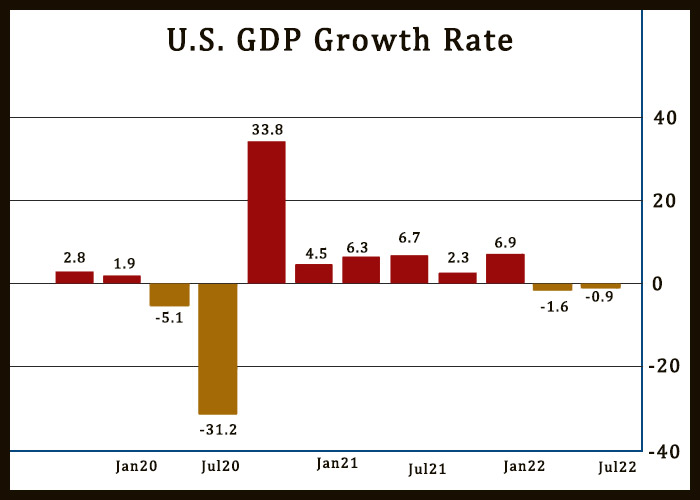
U.S. GDP Unexpectedly Decreases For Second Consecutive Quarter
July 28, 2022U.S. economic activity unexpectedly saw a continued contraction in the second quarter of 2022, according to a report released by the Commerce Department on Thursday.
The Commerce Department said real gross domestic product decreased by 0.9 percent in the second quarter after slumping by 1.6 percent in the first quarter. Economists had expected GDP to increase by 0.5 percent.
With GDP unexpectedly declining for the second consecutive quarter, the data signals the U.S. economy is in a technical recession.
The drop in GDP in the second quarter reflected decreases in private inventory investment, residential fixed investment, government spending and non-residential fixed investment.
The report showed a huge drag from the change in private inventories, which subtracted 2.0 percent from GDP in the quarter.
Increases in exports and consumer spending helped limit the downside, although the pace of consumer spending growth continued to slow to 1.0 percent in the second quarter from 1.8 percent in the first quarter.
Meanwhile, the Commerce Department said the smaller decrease in GDP compared to the first quarter reflected an upturn in exports and a smaller decrease in federal government spending.
They were partly offset by the slowdown in consumer spending, larger declines in private inventory investment and state and local government spending and downturns in non-residential fixed investment and residential fixed investment.
“Overall, the data confirm that underlying growth has slowed sharply, but with labor market conditions still holding up and inflation far too high, that won’t convince the Fed to dial back its tightening plans,” said Andrew Hunter, Senior U.S. Economist at Capital Economics.
The report showed the annual rate of growth in core consumer prices, which exclude food and energy prices, slowed to 4.8 percent in the second quarter from 5.2 percent in the first quarter.
Source: Read Full Article


